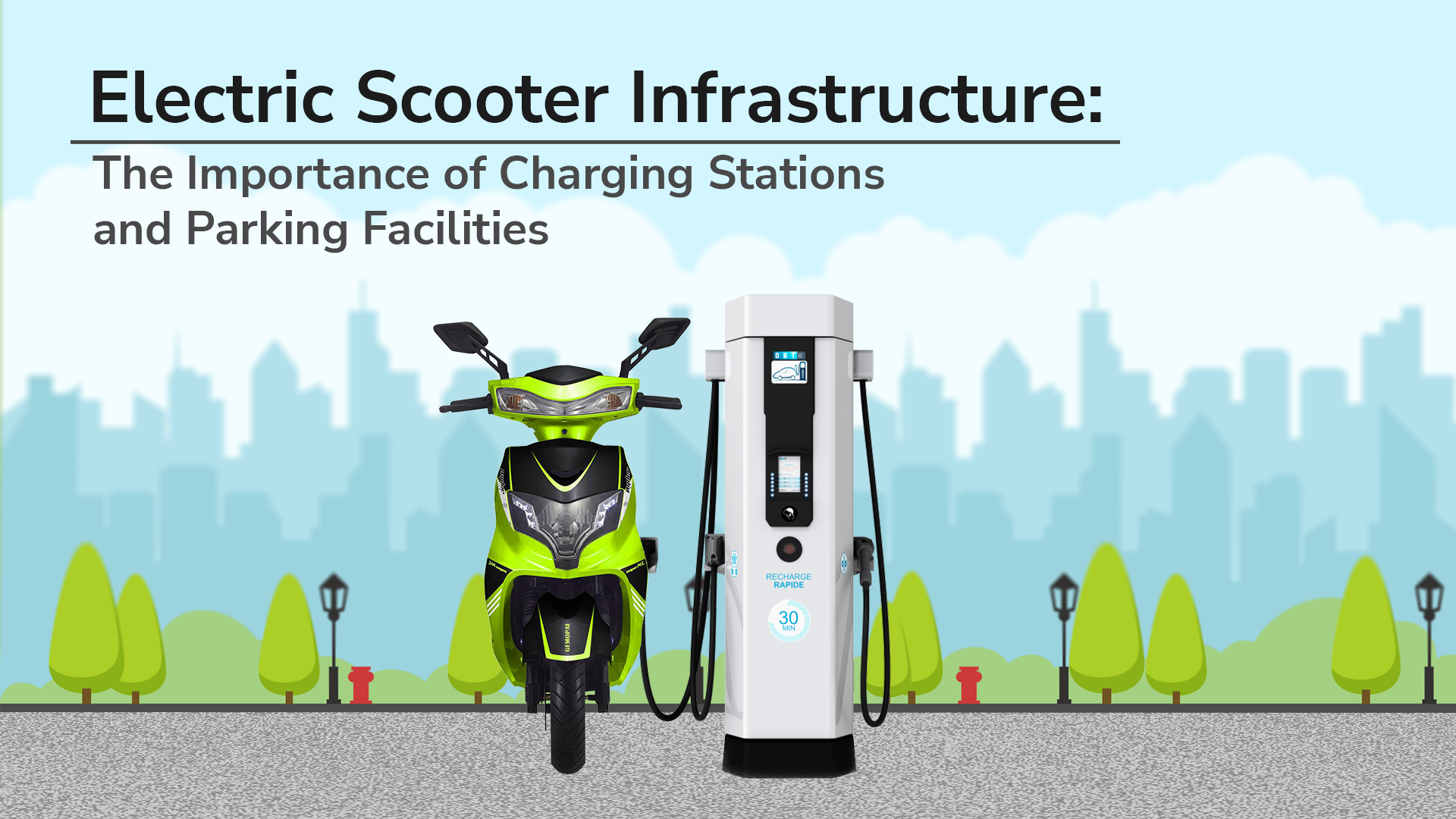Electric Scooter Infrastructure: The Importance of Charging Stations and Parking Facilities
08 Jan 2024

Paving the Way for a Sustainable Urban Mobility Revolution
In recent years, urban centers around the world have witnessed a surge in the adoption of electric scooters as a convenient and eco-friendly means of transportation. These nifty two-wheelers offer a seamless solution for short-distance commutes, reducing traffic congestion, and curbing carbon emissions. However, for the electric scooter revolution to truly flourish and become a sustainable urban mobility option, robust infrastructure is a necessity. In this blog post, we’ll delve into the vital role of charging stations and parking facilities in fostering the growth of electric scooters and ensuring a greener future for our cities.
The Rise of Electric Scooters: A Clean Commuting Solution
Electric scooters have rapidly gained popularity due to their eco-friendliness and accessibility. With zero tailpipe emissions, they serve as an attractive alternative to gas-powered vehicles, helping cities combat air pollution and improve air quality. Additionally, their compact size allows for easy maneuverability in congested areas, making them an ideal choice for urban commuting and last-mile travel.
The Role of Charging Stations: Empowering Electric Scooter Users
One of the most critical elements in the electric scooter infrastructure is a well-distributed network of charging stations. These charging stations play a central role in encouraging users to adopt electric scooters with confidence, knowing they can conveniently recharge their vehicles when needed.
- Enhancing Range Confidence: The availability of charging stations throughout the city ensures that riders can recharge their scooters easily and extend their range. This alleviates range anxiety, a common concern among electric vehicle users, and promotes longer, emission-free journeys.
- Seamless Urban Mobility: Strategic placement of charging stations at key locations, such as transportation hubs, commercial areas, and popular destinations, creates an integrated and seamless urban mobility experience. This encourages more people to choose electric scooters for their daily commuting needs.
- Boosting Local Businesses: Electric scooter charging stations installed near businesses and retail areas can attract more customers. People can conveniently charge their scooters while shopping or dining, leading to increased foot traffic for local establishments.
- Smart Charging Solutions: Implementing smart charging solutions can optimize the use of energy and ensure that charging stations are available when and where they are most needed. Dynamic charging rates and incentives can also be introduced to encourage off-peak charging and efficient use of resources.
The Importance of Parking Facilities: Orderly and Efficient
Proper parking facilities for electric scooters are equally crucial for maintaining an organized and pedestrian-friendly urban environment.
- Reducing Clutter: Designated parking areas prevent scooters from cluttering sidewalks and public spaces, enhancing safety and accessibility for pedestrians.
- Preventing Theft and Vandalism: Secure parking facilities with locking mechanisms deter theft and vandalism, providing peace of mind to scooter owners and sharing service operators.
- Ensuring Accessibility: Well-distributed parking facilities allow users to find parking spots easily, promoting a responsible approach to scooter parking and minimizing obstructions.
- Integration with Public Transit: Co-locating scooter parking with public transit stations encourages intermodal travel, making it easier for commuters to combine different modes of transportation for a seamless journey.
The Way Forward: Collaborative Efforts for Sustainable Urban Mobility
Building a robust electric scooter infrastructure, including charging stations and parking facilities, requires collaboration among various stakeholders, including city authorities, scooter-sharing companies, private businesses, and citizens.
Municipalities should proactively invest in building a comprehensive charging infrastructure and promote policies that incentivize the deployment of charging stations. Incentives for businesses to install charging stations and participate in scooter-sharing programs can also boost adoption rates.
Public-private partnerships can play a crucial role in expanding the electric scooter infrastructure while ensuring responsible deployment and maintenance.
As citizens, we can support this sustainable urban mobility revolution by responsibly using electric scooters, adhering to traffic regulations, and parking scooters in designated areas.
In conclusion, the successful integration of electric scooters into our urban landscape hinges on the development of a well-planned and interconnected infrastructure, comprising charging stations and parking facilities. By embracing this eco-friendly mode of transport and investing in its infrastructure, cities can move closer to a greener, more sustainable future while providing their citizens with efficient and convenient mobility options.

